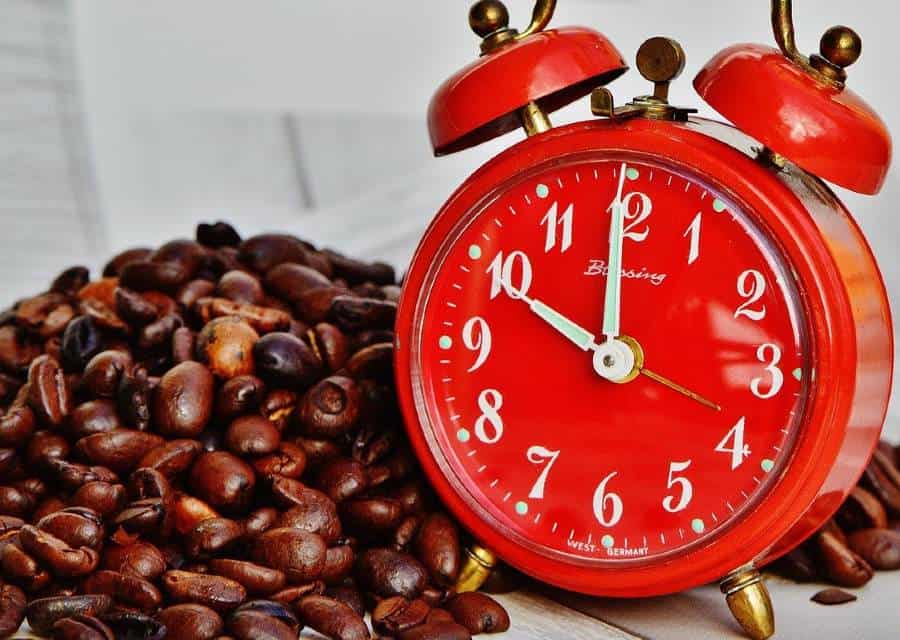
Coffee experts advocate for very particular standards and measurements when brewing coffee and this sometimes complicates a drink that should be fun to make without feeling like a scientist in the laboratory.
The truth is a burr grinder reliably and conveniently produces a uniform size of coffee grounds and enables you to reproduce the same quality of coffee.
Nevertheless, making coffee should not be intimidating or super-expensive. It would be wonderful to get all the measurements to a tee but our taste buds are the best judge when it comes to the best cup of coffee.
We should experiment with the equipment that is available to us and see how we like the coffee. Fortunately, it is possible, with a few tweaks and tricks, to achieve a consistent grind size when grinding coffee without a grinder.
Can you grind coffee beans in a food processor?
Yes, you can grind coffee beans in a food processor using the blades of the processor. With careful eyeballing and a few hacks, you can achieve a uniform grind size with a food processor. However, the longer you grind the coffee beans, the finer the grind size which can complicate the brewing process.
There are numerous ways to grind coffee beans when you do not have a grinder. With a few nifty hacks that we will share with you, any equipment that has blades – whether it’s a mini chopper, a Magic Bullet, a Ninja food processor, or just a regular blender – will pulverize your coffee beans to the desired uniform size.
How to Grind Coffee Beans in a Food Processor
What you need:
A food processor, roasted coffee beans, a sieve, paper towels, and a small empty container
Food processors come with different parts depending on the manufacturer and model number. You can use the grinder (dry mill), work bowl, or the blender jar of your food processor to grind coffee beans. The process remains the same.
A food processor has powerful blades that can mill the coffee beans to unusable fine grinds. Therefore. grinding coffee beans with a food processor requires short bursts to avoid over-grinding. Strive to achieve a uniform grind size.
The reason we grind coffee is to increase the surface area of the coffee grounds to enhance the interaction between water and the grounds. When the grind size is not uniform, water extracts fewer coffee solubles from coarser grounds and more from the finer grounds and the extracted coffee does not taste that good.
Grind a few coffee beans at a time for more control over the grinding process and follow the following nifty hacks by the coffee expert, James Hoffman, to achieve a uniform grind size with a food processor:
- Grind and shake in short bursts to control the grind size. The pulse setting on the food processor enables you to start and stop grinding instantly. Press and release the PULSE button 3-5 times to grind the coffee. Alternatively, use the on-off buttons for a processor that has no pulse function to grind for 1-2 seconds. Shake the food processer when grinding to push the large particles to the blades
- Sifting. Empty the grounds to a sieve and the finer grounds will sift through leaving behind the coarser grounds
- Add the coarser grounds back into the food processor and grind again for 3-5 pulses.
- Repeat the sifting and grinding process until all the grounds go through the sieve
- Remove the very fine grounds. Spread the sifted grounds on a paper towel and then lift the four corners of the towel to funnel the grounds back to the container. The fine grounds will stick on the paper towel and the grounds in the container are uniform in size. Repeat the process until you have ground enough coffee beans to brew the coffee
Food processors are multi-function; most people use them for various kitchen tasks hence they can introduce off-flavors to the coffee during grinding. Thoroughly clean and dry the processor parts that you intend to use to grind your coffee to get rid of foreign flavors and smell that can end up in the coffee.
How to Grind Different Sizes of Coffee Grounds in a Food Processor
The longer you grind coffee beans in a food processor, the finer the grind size. Here is how to achieve the various grind sizes:
- Coarser grind size. Add a few coffee beans to the processor and grind for a very short period such as 1-2 seconds. Rock the processor when grinding to push the coffee beans to the blades. Coarse grind size is perfect for a percolator coffee maker or a French press due to its steeping technique that allows for more time of contact between water and the coarse grounds
- Medium-coarse grind size. Use a standard sieve to sift the grounds after every 1-2 seconds of grinding and use a paper towel to remove the fines. Medium-coarse grounds are suitable for Chemex coffee as the Chemex has a longer brew time as well as pour-over and drip coffee makers that use mesh filters
- Fine grind size. Grind a bit longer and sift with a fine sieve. Regrind the coarse grounds until all of them sift through the fine sieve. Fine grind size is suitable for espresso and Moka pot. However, you run the risk of making super-fine grounds that will ruin your espresso
Food Processor vs Coffee Grinder
Both food processors and coffee grinders are mills: their work is to pulverize. They are available in both the high-end automatic range and manual ranges.
There are two main differences between a food processor and a coffee grinder:
- A coffee grinder has adjustments for the grind size from very coarse to very fine. A food processor has no size adjustments and finer grinds are produced by running the processor longer
- A burr coffee grinder has two sets of burrs that move in opposite directions and have different sizes of teeth. The burrs grind the coffee beans to smaller uniform particles that can pass in-between the two sets of burrs depending on the preset grind size. A food processor, on the other hand, has blades that move in the same direction and produces different grind sizes
Blade coffee grinders work in the same ways as food processors and can be used to grind other ingredients such as spices because they are easier to clean than burr grinders. Blade grinders also handle both spices that have husks and larger spices much better than burr grinders.
However, using spices on a coffee grinder leaves undesirable flavor and smell in the grinder. Use baking soda or vinegar to clean a grinder that has milled spices or other ingredients to avoid off-tastes and smells the next time you grind coffee.
Recap
A burr grinder is the most convenient and surest way to achieve a uniform coffee grind size. However, not having a coffee grinder should not stop you from brewing coffee when you have a food processor at home. With a few hacks, blade grinders including food processors can also yield a uniform grind size.
When grinding coffee beans in a food processor, pay attention to the grinding duration as the longer you grind the finer the grounds. You are better off grinding for a few seconds while eyeballing the grind size and regrind the coarser grounds to the preferred size.
Grinding a few coffee beans at a time enables you to control the grinding process and also minimizes wastage if for some reason the grinding goes wrong. Alternatively, you can brew coffee with whole beans if you do not have grinding equipment with you.
Here is an article about how to brew coffee with whole beans.
Related Questions
Can You Grind Coffee Beans in a NutriBullet?
Yes, you can grind coffee beans in a NutriBullet. You can use either the milling blade (2 blades design) or the standard smoothie blades (4 blades design) to mill the coffee beans in a NutriBullet.
Both the NutriBullet (original) and NutriBullet Pro do not feature control buttons and locking the inverted blender to the powered base will switch the appliance on. Here are the steps to follow for a consistent grind size:
Materials:
A NutriBullet, paper towels, a small empty container, a sieve
- Plug the NutriBullet into a source of power
- Add coffee beans to the blender to between a third and the halfway line
- Cover the blender with the blades holder
- Insert the blender into the base and twist it clockwise to start grinding
- Grind for 1-2 seconds for a coarse grind and 3-5 seconds for medium-fine grind size. Twisting the blender anticlockwise will stop the grinding. For a consistent medium-fine grind size, grind for 1-2 seconds and sift the grounds through a sieve into a container. Regrind the coarse grounds and sift again until all the grounds sift through
- Empty and spread the ground coffee on a paper towel and add the grounds back into the container. The very fine grinds remain stuck on the paper towel and you end up with consistent coffee grinds
You may forego sifting and using the paper towel, but they are an affordable way to increase the consistency of the grounds for a better cup of coffee.

